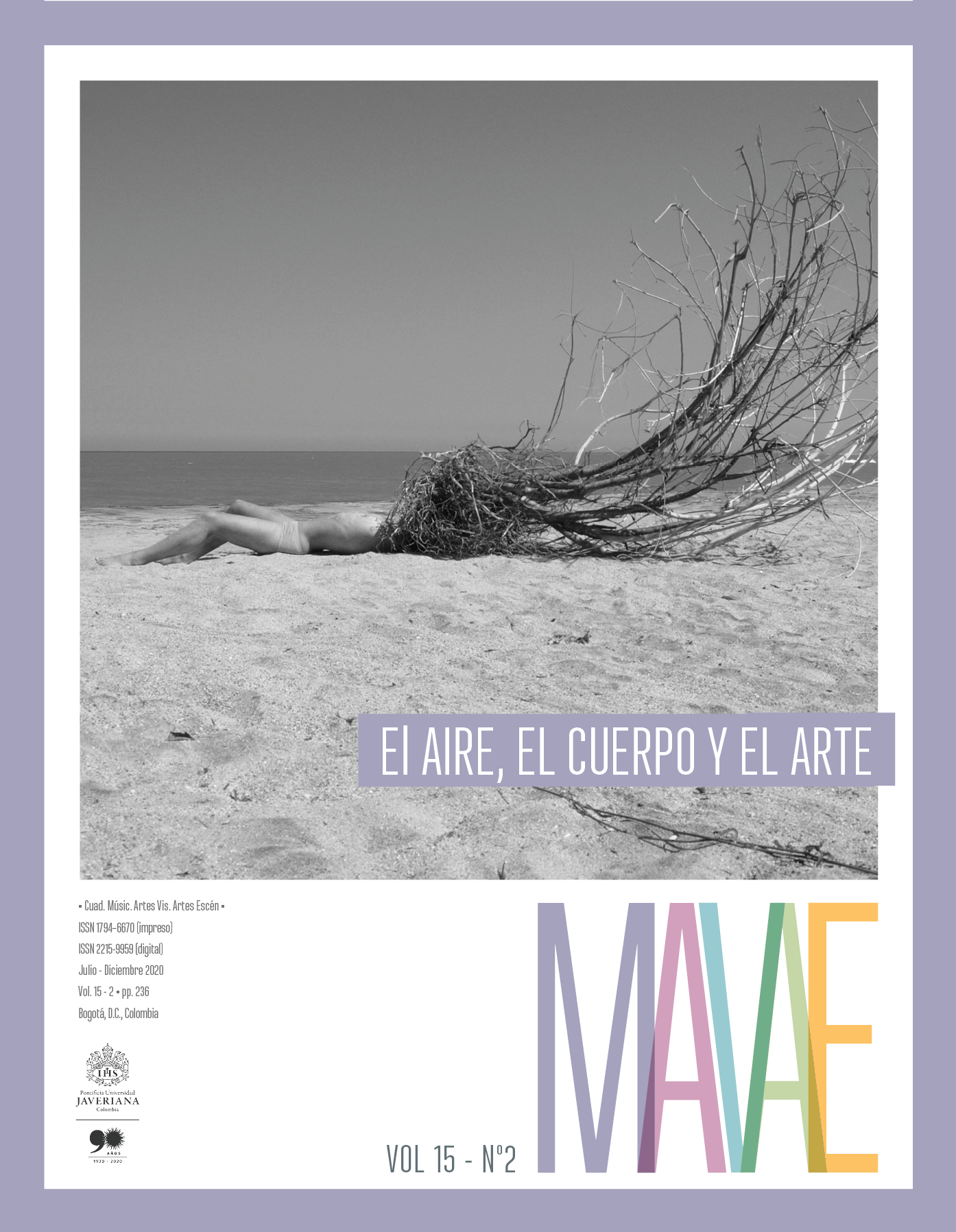Resumen
Este texto resume el viaje que emprendí para mi proyecto de investigación-creación de lutería experimental colaborativa. Mientras cursaba mi Maestría en Artes Sonoras, me interesé profundamente en el carácter y la presencia del viento con el que tropezaba constantemente en Belfast, Irlanda del Norte. Adoptando el enfoque cosmopolítico propuesto por Isabelle Stengers, leído en el marco de las artes contemporáneas, evaluaré la viabilidad de presentar el proceso de fabricación de sonidos como una plataforma de colaboración en la que se permita la interacción de actores humanos y no humanos. Mientras me preguntaba cómo establecer mecanismos de intercambio sónico con el viento, redescubrí las prácticas locales de fabricación de cometas y comencé a estudiar la cometa usando herramientas conceptuales traídas de la teoría alemana de los medios, particularmente el trabajo iniciado por Friedrich Kittler. Es un hecho físico que la cometa no podría volar si faltara el Viento o el Humano; por lo tanto, en ese sentido, argumentaré que el vuelo de la cometa puede presentarse como Kulturtechnik siempre que ambos actores se vean afectados por el resultado de la acción colaborativa. Yendo un paso más allá, exploraré la construcción de cometas en términos de lutería experimental como un proceso en el que el “instrumento” final es en realidad el resultado de la interacción viento-humano-sonido.
Bjerknes, Jacob. 1964. “Atlantic Sea interaction.” Advances on
geophysics 10: 1–82.
Borrero Milciades, Marleny Pérez. 2004. Vaupés mito y realidad, MåniJitiKiti.
Bogotá: Dede banjo.
Brinton, Daniel. 1881. “The Name of the Gods in the Kiche Myths, Central
America.” In Proceedings of the American Philosophical Society, 613–
647. www.jstor.org/stable/982803.
Cáceres, Adolfo. 2006. Narrativa qechua del Tawantinsuyu. Buenos Aires:
Ediciones del Sol.
Chen, Xianjiao, and Ka-Kit Tung. 2018. “Gulf stream map” on Global Surface
Warming Enhanced by Weak Atlantic Overturning Circulation. Nature
559, 387–391. https://www.nature.com/articles/s41586-018-0320-y
De Borhegyi, Stephan. 1966. “The Wind God’s Breastplate.” Expedition
Magazine 8(4): 13–15. http://www.penn.museum/sites/
expedition/?p=1588
Emanuel, Kerry. 2005. Divine Wind. Oxford: Oxford University Press.
Ferment, Didier, Bruno Tondellier, and Uli Wahl. 2008. Musiques du vent.
Lyon: Lugdivine.
Becerra, Eudocio. 1998. “El poder de la palabra”. Forma y función 11: 20.
Bogotá: Universidad nacional de Colombia.
Dieusao. (2015). Tiếng Việt: Diều sáo tung bay. https://commons.wikimedia.
org/wiki/File:Th%E1%BA%A3_Di%E1%BB%81u.jpg
Dodson, Chris. n.d. Got wind? Make Music! http://gotwindmakemusic.org
Gómez-Londoño, Ana María. 2013. “Memory Code®.” Magister thesis.
Universidad Nacional de Colombia.
Gregory, Ken. n.d. Wind coil sound flow. https://cheapmeat.net/
kengregoryTop.html
Heaney, Seamus. 2010. Human Chain. A kite for Aibhin. London: Faber & Faber.
Hennessy, Henry. 1959. “On the influence of the gulf-stream on the winters
of the British Islands. In a letter from Professor Hennessy to Major-
General Sabine, V. P. and Treas. R. S. Communicated by Major-General
Sabine”. London. Proceedings of the Royal Society 9: 324 - 328.
Hildebrand, Martin. 1983. “Notas etnográficas sobre el cosmos ufaina y su
relación con la maloca.” Maguaré 2: 177–210.
Krämer, Sybille, & Horst Bredekamp, 2013. “Culture, Technology, Cultural
Techniques: Moving Beyond Text.” Theory Culture and Society 30: 20–29.
Joyce, James. 1922. Ulysses. New York: Dover Publications 2009.
MacGarrity, Maria. 1979. Washed by the Gulf Stream. Delaware: University
of Delaware Press.
Matisse, Jackie. 2000. Art that Soars: Kites and Tail. San Diego: Mingei
International Museum.
Miller, Mary, & Karl Taube. 1997. An Illustrated Dictionary of the Gods
and Symbols of Ancient Mexico and the Maya. London: Thames
and Hudson
Ocean today. n.d. The Making of a Superstorm. https://oceantoday.noaa.
gov/makingofasuperstorm/
Ortiz, Fernando. 1947. El huracán su mitología y sus significados. México DF:
Fondo de Cultura Económica.
Oxford Contemporary Music. Audible Forces. https://www.ocmevents.org/
audible-forces
Oxford English Dictionary Online. Oxford: Oxford University Press, 2004.
http://www.oed.com/viewdictionaryentry/Entry/11125
Peña, Juan Carlos. 2010. Mitú, ciudad amazónica, territorialidad indígena.
Leticia: Universidad Nacional de Colombia.
Simón, fray Pedro. 1892. Noticias historiales de las conquistas de Tierra
Firme en las Indias occidentales. Bogotá: Casa editorial de Medardo
Rivas.
Suay, Juan Miguel. 2000. Cometas tradicionales en España y América.
http://comevientos.96.lt/historia/articulo/especial01.pdf
Tedlock Danis, 1996. Popol Vuh. The Mayan Book of the Dawn of Life.
California: Touchstone.
Windmusik, Uli Wahl. (n.d.). Kite Musical Instruments & Aeolian Musical
Instruments. http://windmusik.co

Esta obra está bajo una licencia internacional Creative Commons Atribución 4.0.
Derechos de autor 2020 José Manuel Páez Moncaleano



